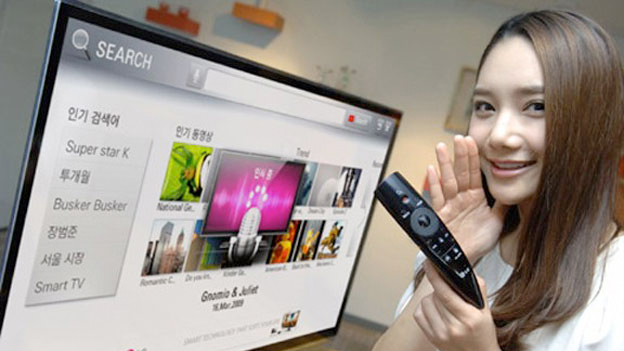Gartner: Gestures and voice control won't take over the TV
Instead they'll be "a function of the mobile phone working with the TV"

Gestures and voice control aren't things we'll be seeing on our TVs. That's according to Gartner principal analyst Paul O'Donovan.
Instead, O'Donovan believes such methods of interaction will use phones and tablets as go-between devices rather than using Kinect-style gestures or voice control directly with the TV.
O'Donovan was speaking about the connected home during the Future World Symposium, taking place at Wembley Stadium. "There's a lot of talk about voice control and gesture control on the TV. I don't think that will be on the TV, I think that will be a function of the phone working with the TV."
Talking about the public's attitude to the connected home, O'Donovan said: "Today is very much about how can I connect to the internet rather than how can I connect to my TV – although that's coming."
"Things like iCloud are going to become much more personal and where you have third-party content you'll be able to share them on any device anywhere in the world. There's a huge variety of devices that lead to the Internet of Things, where almost anything has an IP address."
"It encompasses TVs, phones, tablets, eHealth, energy management – these are all going to end up as part of the cloud." O'Donovan added Gartner believes there will be 3bn wireless chipsets around in 2015 – "I'm not going to say how many in 2020 but it will be considerably more than 3bn".
"It's important to point out that we are all people and although [the tech savvy] are good at understanding these technologies, the vast majority are not."
Get daily insight, inspiration and deals in your inbox
Sign up for breaking news, reviews, opinion, top tech deals, and more.
Social networking and the TV
O'Donovan also talked about what he called video-based network households, primarily in developing countries. "These are brand new – they weren't previously PC-based households." He talked about many of these homes having a BitTorrent P2P box that plugs directly into their broadband connection. "That is very common."
"With connected TVs, it's about how manufacturers differentiate flat panel displays. The way to differentiate them is by whose icon you have on your Smart TV."
O'Donovan moved on to talk about how people interact with social networking while watching TV. "I think the point about the TV is that it's definitely an object people share in the home. People sit in front of their TV with it on using their mobile device. They may be tweeting about things going on on the TV – they are doing something else with their hands.
"Smart TVs will not be used for social networking; nobody sharing TVs in the room will be using their TVs for social networking, that's for personal devices.
"This is common across all countries. The mobile device can start to source content for the TV and be a remote control for the TV."
The Gartner analyst also added that now Intel has withdrawn from connected TV, ARM is set to reap the benefit. He added that well over 70 per cent of sets sold would pack ARM chips.
Dan (Twitter, Google+) is TechRadar's Former Deputy Editor and is now in charge at our sister site T3.com. Covering all things computing, internet and mobile he's a seasoned regular at major tech shows such as CES, IFA and Mobile World Congress. Dan has also been a tech expert for many outlets including BBC Radio 4, 5Live and the World Service, The Sun and ITV News.